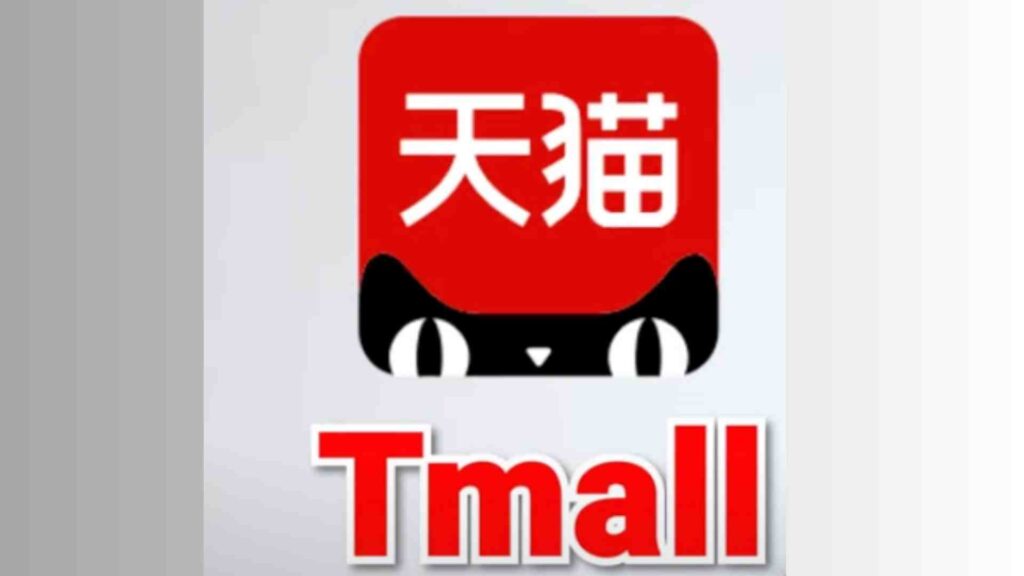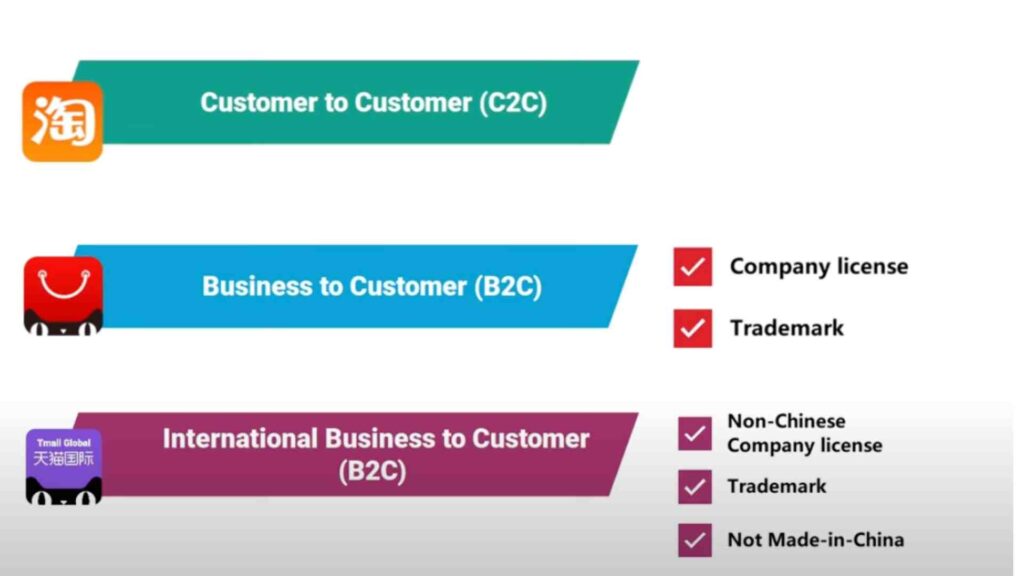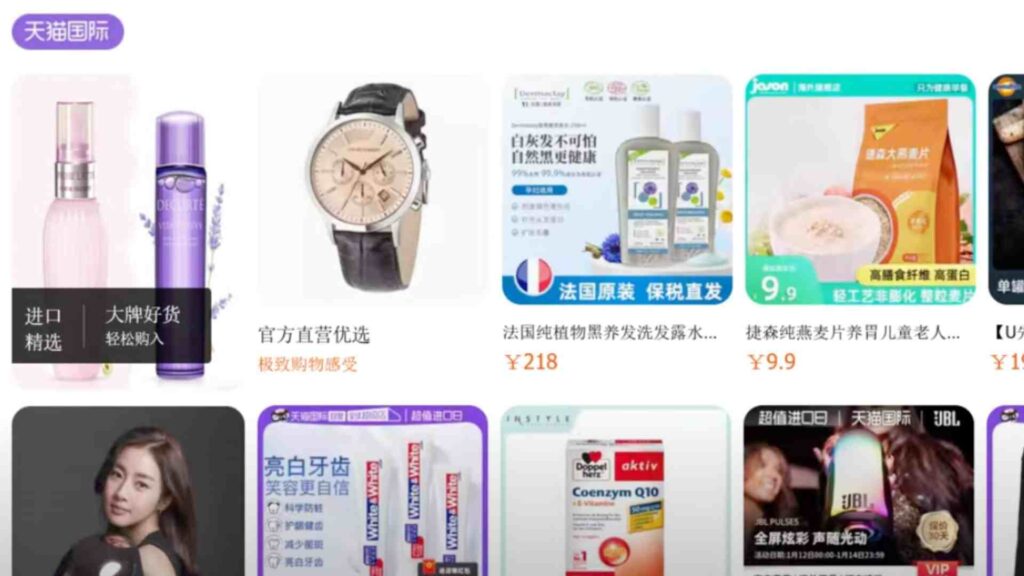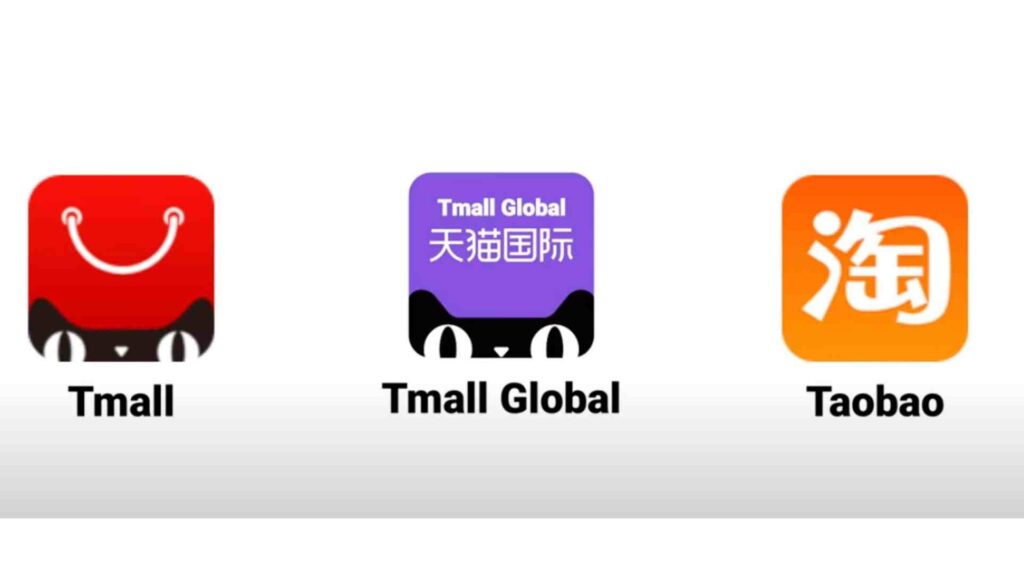Tmall (Taobao Mall), operated by Alibaba Group, is one of the largest B2C (business-to-consumer) platforms for eCommerce in China. Navigating China’s e-commerce landscape can be complex and challenging, but Tmall caters to domestic Chinese consumers by offering products from both local and international brands. Understanding China’s e-commerce market is crucial, as it plays a significant role in the global e-commerce industry.
Taobao, Tmall, and Tmall Global are integrated into Alibaba’s broader ecosystem, including Alipay for payment processing, Cainiao for logistics, and Alibaba Cloud for technology infrastructure. This seamless integration provides a smooth shopping and selling experience across both platforms.

Tmall Global, Tmall, and Taobao: Key Takeaways
- Tmall Global is an extension of Tmall that allows overseas brands and retailers to sell directly to Chinese consumers without needing a physical presence in China. This platform bridges the gap between international sellers, including overseas consumers, and the Chinese market.
- Tmall: Introduced in 2008 as Taobao Mall, it was later rebranded to Tmall in 2011. Tmall is a business-to-consumer (B2C) platform designed for larger businesses and brands to sell directly to consumers. It provides a more premium shopping experience with a focus on brand authenticity and product quality.
- Taobao: Launched in 2003, Taobao is a consumer-to-consumer (C2C) platform similar to eBay. As a significant player in the Chinese e-commerce market, it allows individuals and small businesses to sell products directly to consumers. It is known for its vast variety of products, including both new and second-hand items.

Seller Types for Chinese Consumers
- Taobao: Anyone can become a seller on Taobao, which results in a wide range of products from various sellers, including individual entrepreneurs, small local businesses, and independent sellers, dominating the Chinese domestic market.
- Tmall: Only verified businesses and brand owners can sell on Tmall. This verification process ensures that Tmall maintains a higher level of product quality and brand authenticity. Sellers on Tmall are often well-known brands, manufacturers, and large retailers.
Product Categories in the Chinese Ecommerce Market
Both platforms offer a wide range of product categories through their online retail interfaces, including fashion, electronics/electronic appliances, beauty, health, home goods, and more. Tmall Global especially emphasizes imported consumer goods, appealing to Chinese consumers looking for foreign products.
The gross merchandise value of these product categories is crucial for evaluating the market size and transaction value within the Chinese e-commerce sectors.
Logistics and Delivery Services
Tmall provides robust logistics and delivery services support through Cainiao, Alibaba’s logistics arm, ensuring efficient delivery and fulfillment services. Tmall Global leverages cross-border logistics to streamline the process for international sellers.
Marketing and Promotion Through Live Streaming E-commerce
Sellers on Tmall and Tmall Global have access to various marketing tools and promotional opportunities, including participation in major sales events like Singles’ Day (11.11), which is one of the world’s largest online shopping festivals. The growth and value of online retail in China are evident in the increasing share of retail sales taking place online.

The retail sales value is a crucial metric for measuring the success of marketing and promotional strategies, reflecting the year-on-year growth and revenue of leading e-commerce companies in China.
Live streaming e-commerce and social media awareness is also a popular promotional strategy, especially in China, where it has significantly grown in market size and value.
Quality Assurance and Trust
Tmall maintains strict quality control and verification processes to ensure the authenticity of products, which is crucial given the high gross merchandise volume in the e-commerce market. This focus on quality helps build trust among Chinese consumers, who are often wary of counterfeit goods. The e-commerce share of total retail sales in China from 2012 to 2023 reflects this consumer trust and the strong performance of the market.
Taobao: Due to the open nature of the platform, product quality can vary significantly, and there is a higher risk of counterfeit goods. However, buyer reviews and seller ratings help consumers make informed decisions.
User Experience and Interface
Both platforms offer a user-friendly interface for online shoppers and seamless e-commerce shopping experience, with features like detailed product descriptions, customer reviews, and secure payment options through Alipay.
Taobao: The platform offers a diverse and sometimes chaotic shopping experience with a mix of different products, prices, and quality levels. Taobao has extensive search and recommendation features to help users find what they are looking for amidst its vast product listings.
Seller Support and Services
Tmall provides extensive support services for sellers in the Chinese ecommerce market, including storefront customization, data analytics, and customer service. Tmall Global also offers assistance with regulatory compliance, marketing, and logistics.

How to use Alipay in Tmall
If you don’t already have an Alipay account, you’ll need to create one. Download the Alipay app from your app store and follow the registration process, which includes verifying your phone number and setting up a payment password.
- Link a Payment Method
After setting up your Alipay account, link a payment method such as a bank card, credit card, or a balance in your Alipay wallet. This can be done within the Alipay app under the “Me” section and then “Bank Cards.”
- Log in to Tmall
Open the Tmall app or visit the Tmall website. Log in with your Alibaba account. If you don’t have an account, you’ll need to register for one.
- Browse and Select Products
Browse through Tmall’s vast selection of products. When you find something you want to purchase, click on the product to view its details.
- Add to Cart or Buy Now
You can add items to your cart if you want to continue shopping or click “Buy Now” to proceed directly to the checkout page.
- Checkout Process
Review the items in your cart, check the quantity, and ensure all details are correct. Proceed to checkout by clicking on the appropriate button.
- Choose Alipay as Payment Method
On the payment page, select Alipay as your payment method. This option is usually displayed prominently among other payment options.
- Confirm Payment Details
After selecting Alipay, you’ll be redirected to the Alipay payment page. Confirm the payment details, including the amount and the payment method linked to your Alipay account.
- Authorize Payment
To complete the payment, authorize the transaction by entering your Alipay payment password or using biometric authentication (fingerprint or facial recognition) if enabled.
- Payment Confirmation
Once the payment is successful, you will receive a confirmation both on Tmall and within the Alipay app. Tmall will also update the order status to reflect that payment has been received.
- Order Tracking
You can track your order directly on Tmall under the “My Orders” section. Additionally, you’ll receive updates and notifications through the Alipay app regarding your transaction and order status.
